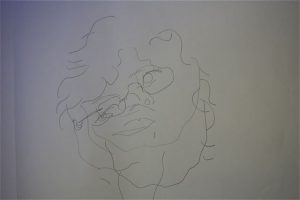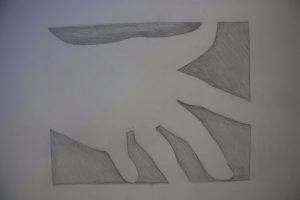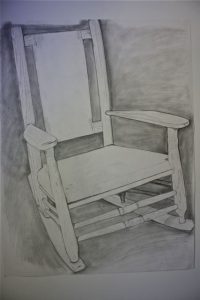A Passion for Learning
This blog post is adapted from the August 28, 2017 opening address to Smithfield educators and staff…
The mission of the Smithfield Public Schools is to provide an adaptive and challenging learning environment that meets the needs of students in an emerging global community, and prepares them for excellence in education and the workplace, while cultivating integrity, responsibility and a sustained passion for continued learning… a sustained passion for continued learning. It makes me pause and ask,
- How do we live that part of our mission?
- How do we profess our own passion for learning and help instill this passion in our students?
- Why is it so important?
As I pondered these questions, I also came to realize that it is an amazing time to be a learner. I asked Smithfield educators and staff to answer two questions:
- What did you learn about or learn to do this summer? And
- How did you learn this?
Some of the lucky among this group learned about culture and history through international travel. Mary Grundy visited Holland, Paris, Switzerland, and Germany. Lisa Girard visited Iceland and London and Diana Daniels traveled to Russia. Others stuck closer to home: Holly-Anne Keenan visiting San Francisco, Anne Mare Maguire traveled to New Mexico and Lindsay Paolino to Colorado. Jennifer Ross learned about Lincoln and Truman through visits to the presidents’ homes.
Some individuals learned new domestic endeavors. Lindsay Burrows learned how to make her grandmother’s lasagna, Jane Ramos learned how to propagate African violets, and Michael Stone learned how to manage an 8 month old and a 2 ½ year old by himself. John Burns learned Masonry, JoAnn Robitaille installed vinyl flooring, and Lauren Aurecchia learned basic plumbing. Linda Carley can now construct a backyard patio, Carlton Bradshaw learned how shrubs can be used to create a windbreak, and Kerrie Murphy grew more adept at home improvement.
After an encounter in a NH lake, Kathy Melo learned about snapping turtles.
Karen Guarino learned how to fish, Tracie LaChapelle learned to parasail, and Chris Coderre learned the ins and outs of Smithfield athletics.
There was also plenty of professional learning happening this summer. Nellie Chomka learned more about students with Asperger’s. Sandy Rego learned about strategies for close reading. Margarita Dempsey attended the AATF national conference. Luigia Solda learned to help students critically distinguish fake news. Megan Hall learned Adobe illustrator,
Morgan Witman learned about an influence on science thinking.
Lynn Farren learned about the Proloquo2 App. Melissa Clapprood learned about student centered teaching Kerrie Murphy learned ClassDojo. Amanda Claus learned about trauma and Sharon Mariotti learned strategies for instilling a love for reading. Victoria Carruba learned about blended learning and Adelio Cabral learned about the impact class advising has on students.
How did they and others learn all that they did? In the 19th century internship was the primary method of learning. We took a step backwards in the 20th century, placing much too great an emphasis on sit ‘n git. But what do we have now in the 21st century? Certainly there’s still a lot of what might be called internship – learning by doing under the guidance of a friend or expert. Consider Karen DiSano learning to make peach pie and pickles under the careful eye of an executive chef, and Kerri learning from her brother how to clam.
But today, if we want to learn about the resilience of refugees like Cynthia Davis did, about the Old Testament like Cindy Jannerelli did, about clean eating like Derek Snow did, about Person Centered Planning like Katherine Lorraine did or if you want to improve your writing craft like Christine DePetrillo did, we have choices; we can take a course, travel, have a friend teach us, buy a book, take an online course, or simply watch YouTube.
Although this summer’s survey was far from scientific, here’s a breakdown of how our educational community reported their learning methods. Reading, as you can see is still a popular mode of learning but we also see a variety of other venues.

And, again, while what I did here certainly couldn’t cut the mustard as an empirical study, I think we can all reasonably agree that in our educational community we value learning and do believe that it is an amazing time to be a learner. So, the next questions are:
- Do we profess that to students?
- How enthusiastic are we about the learning experience?
- How do we deliver the message that learning can be both rigorous and exciting?
- How many of our students will catch this enthusiasm after day one and how many will instead start the countdown to summer 2018?
Being a life-long learner is important for us both individually and as educators. Learning keeps us sharp, makes us interesting, and feeds the soul. Additionally, learning helps us to empathize with learners, and in just one day there will be dozens of those learners sitting in our classrooms.
Each summer I attend to my own learning and one recent summer I took a drawing class. In addition to sharing my drawings, I’ll also share my learning with you, for I think I learned a bit more than drawing in these 7 3-hour classes.
First about art…I expected to learn new techniques for drawing things like landscapes, noses, figures, and other such subjects. Maybe holding the pencil a certain way would result in better shading.
Kathie Boldt, the instructor, explained that we learn as children that certain symbols represent certain objects… an almond shape for an eye, certain curves come together for a mouth, a circle surrounded by pointy rays represents the sun. When we grow into adulthood we sometimes get stuck with those symbolic representations. We don’t need to learn new symbols; what we really need to do is to learn to observe more closely.
Lesson 1: Sometimes the focus of your learning is not what you had expected. What I though would be training for my hand became training for my eyes.
Kathie followed fairly closely the instructional sequence advocated by Betty Edwards, who wrote the book, Drawing on the Right Side of the Brain. It also satisfied my desire to always know why we would be doing what we would be doing. Our discussions about our left and right brains made a lot of sense. Kathie was well prepared and adapted her lessons to meet all 15 of our individual needs. It was a great class.
Lesson 2: If someone has figured out a good instructional sequence and the ideas are research-based, concentrate on adapting that to each individual, rather than completely reinventing the wheel.
Lesson 3: Learners like to know the reasons for what they are doing.
Following each session we had homework. The homework tied closely to what we had learned. At the start of each lesson we shared each others’ work through a gallery walk. There was no way that I would completely embarrass myself. I spent at least 3 hours on my homework each week.
Lesson 4: An audience or a product-focus motivates the learner.
Early in the course we spent quite a bit of time on blind contour drawing. In blind contour drawing you carefully look at the lines, or contours, in the object you are drawing without looking at all at the page. The result is not something you can have much pride about. In fact, my motivation decreased without this product focus. But, Kathie spent some time explaining how this would benefit us. She explained what our brains would be doing. It made sense. I trusted that she had my best interest in mind, so I blindly drew a shell, a hand holding a spoon, and my poor classmate.



Lesson 5: If trust is built between the teacher and the student, the student will do work that has neither a product focus nor an audience.
We went from learning to observe lines more closely to learning to observe negative space. Negative space is the space between the things that we are drawing. Combining careful observations of line and space with attending to proportions moves you a bit further along in your skills. Adding shading puts on a final touch.




The final product was what my husband affectionately called, “the big head.” If he could only see it projected on the huge screen during today’s opening address!

It’s probably about this time that my left brain started arguing with this little diversion of it’s right counterpart. I knew I would never be a great artist, so what was I doing? Why should I bother? Now I’m not saying that I started the class thinking that the inner artist in me would razzle dazzle everyone and I’d soon be quitting my day job, but really, where was I going with this?
Lesson 6: Feelings about an inability to be the best or be especially good at what one is learning can set the learner back.
Sometimes we, as teachers, need to offer encouragement at these times. It’s not to expert status that we go with all our learnings and that’s OK. Through my drawing class and perhaps through your learning we went through many of the emotions students go through everyday in our schools, so let’s remember, this school year,
- Be a cheerleader for learning
- Empathize with learners
- Continue your learning, instilling a passion for learning in our students through example.
Leave a Reply